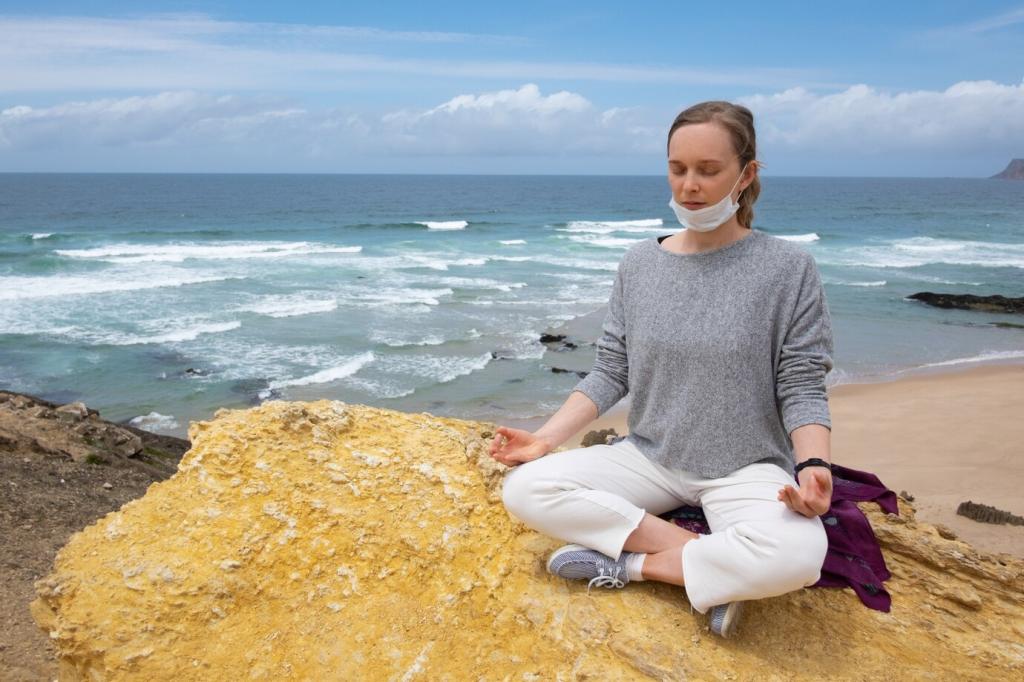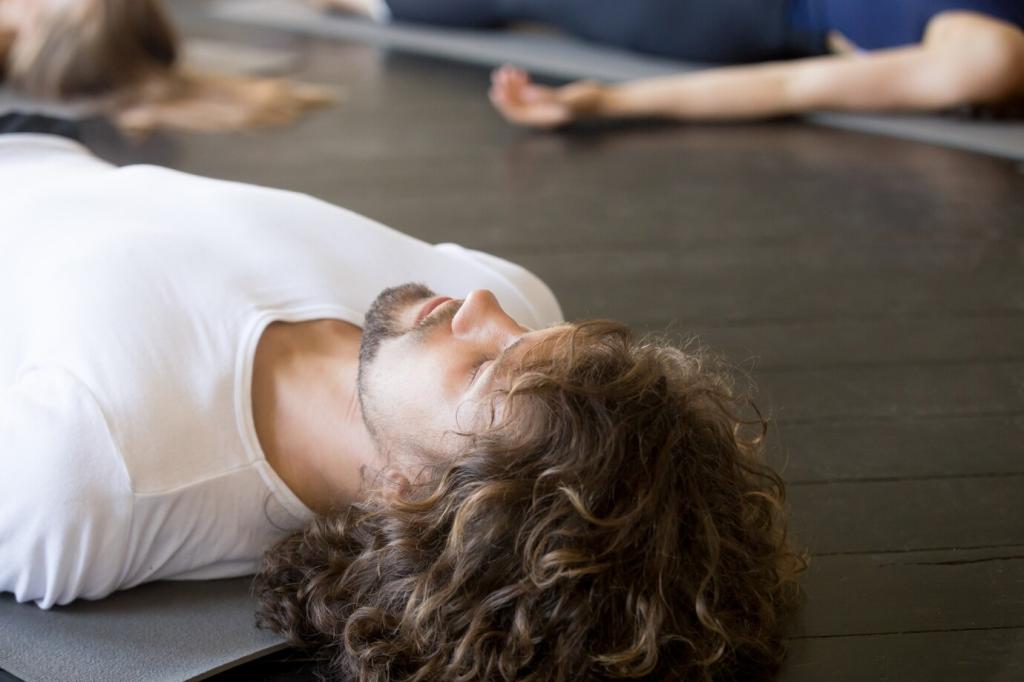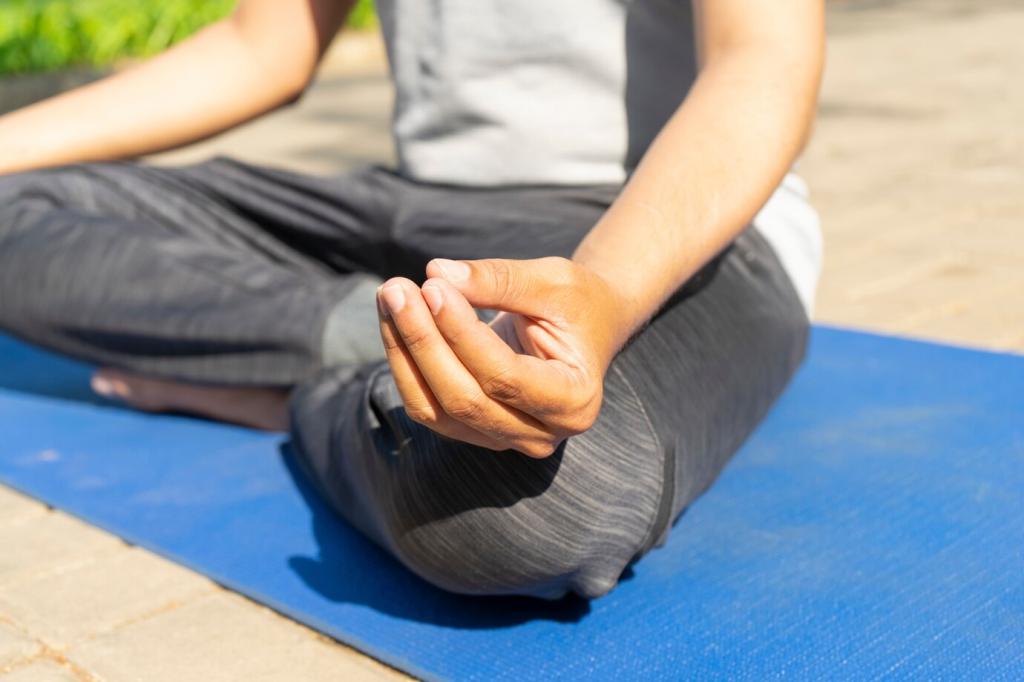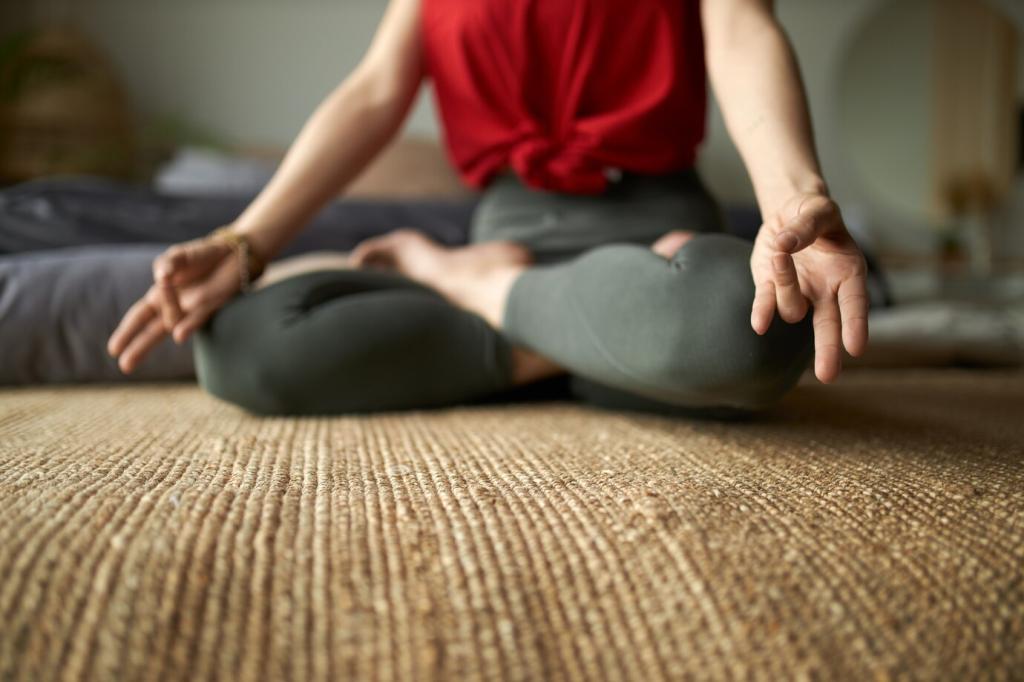Breathe, Release, Restore: Progressive Muscle Relaxation
What Progressive Muscle Relaxation Is—and Why It Helps
PMR invites you to gently tense a specific muscle group for a few seconds and then release. That contrast—effort followed by softness—teaches awareness. Your nervous system registers safety, breathing deepens, and the body learns a repeatable pathway back to ease.
What Progressive Muscle Relaxation Is—and Why It Helps
Physician Edmund Jacobson developed PMR in the 1920s after noticing that mental stress often showed up as muscular tension. Over decades, clinicians, athletes, and therapists adapted his approach. Today, PMR is recommended for anxiety, insomnia, and performance readiness because it is accessible and evidence-informed.



Set the scene
Find a quiet corner, silence notifications, and choose a comfortable posture—seated with supported feet or lying down. Soften the lights. Take six slow breaths, counting four in and six out. Decide on an intention like “practice, not perfection,” and let your shoulders drop.

The classic sequence, head to toe
Gently work through: forehead, eyes, jaw, neck, shoulders, upper arms, forearms, hands, chest, belly, glutes, thighs, calves, and feet. For each, inhale, tense lightly for five seconds, then exhale and release for ten to fifteen. Pause and feel warmth, heaviness, and space.

Timing, pace, and breath
Move slower than you think. Aim for one or two cycles per muscle group. Keep effort at a comfortable level—no straining. Coordinate breath with movement: inhale to prepare, exhale to soften. If thoughts wander, gently return attention to sensations of release and relief.
Sleep, Anxiety, and the PMR Bridge
Maya, a reader who struggled with 3 a.m. wakeups, added a five-minute PMR routine before lights out. Two weeks later, she reported fewer night awakenings and a gentler morning mood. The secret was consistency, not perfection—showing up nightly, even for a short practice.
Sleep, Anxiety, and the PMR Bridge
When spirals start, pair gentle labeling with PMR. Silently note, “jaw tight,” then soften the jaw. Notice “shoulders up,” then release them on a long exhale. This body-first approach steadies thinking by giving your attention a reliable anchor that does not argue with fear.



For Athletes, Artists, and High Performers
Pre-performance arousal dial
Use a five-minute PMR circuit before you step on stage, start a race, or present. Tense lightly, release slowly, and pair each softening with the cue word “loose.” You are teaching your body to find the optimal zone—stable energy without the jittery edge.
Recovery and injury awareness
Post-practice, scan head to toe. Notice where release feels uneven. Persistent tightness can signal overuse or technique issues worth addressing. PMR turns recovery into information gathering, helping you adjust training loads and prevent small discomforts from quietly becoming bigger setbacks.
Confidence you can feel
After each release, visualize your next action executed smoothly—clean stroke, steady note, crisp turn of phrase. Link the felt sense of softness with readiness. Over time, this pairing becomes an embodied anchor you can recall quickly when pressure rises unexpectedly.
Build the Habit and Track Your Progress
Track date, duration, mood before and after, and any standout sensations. Note what helped and what felt tricky. Patterns appear fast and guide tweaks. Seeing progress on paper—or a notes app—turns invisible gains into visible encouragement that keeps momentum rolling.
Attach PMR to something you already do daily: after brushing teeth, before lunch, or right at bedtime. Two minutes counts. Consistency teaches your nervous system when relief is coming, and the cue makes showing up almost automatic, even on hectic, imperfect days.
If certain areas ache, reduce tension intensity or skip tensing and focus on slow release only. Pain is information, not a challenge. Persistent discomfort or dizziness merits professional guidance. Adjust positions, shorten sessions, and keep curiosity kind while you experiment thoughtfully.
If you live with persistent pain
Try release-only PMR: skip deliberate tensing, breathe slowly, and imagine muscles softening like warm wax. Use micro-movements or imagery if movement flares symptoms. Comfort-first practice builds trust and often opens space for a little more ease over time.
Positions that support your body
PMR works seated, lying down, or semi-reclined with pillows. Wheelchair users can target accessible groups and use breath-led releases. If pregnancy, blood pressure, or joint issues are present, keep efforts gentle and avoid breath-holding. Your comfort is the compass for every decision.
When to get professional guidance
If you have a recent injury, a history of muscle spasms, complex trauma, or severe anxiety symptoms, check in with a healthcare provider or therapist. A few personalized adjustments can make PMR safer, more effective, and better aligned with your current health needs.

